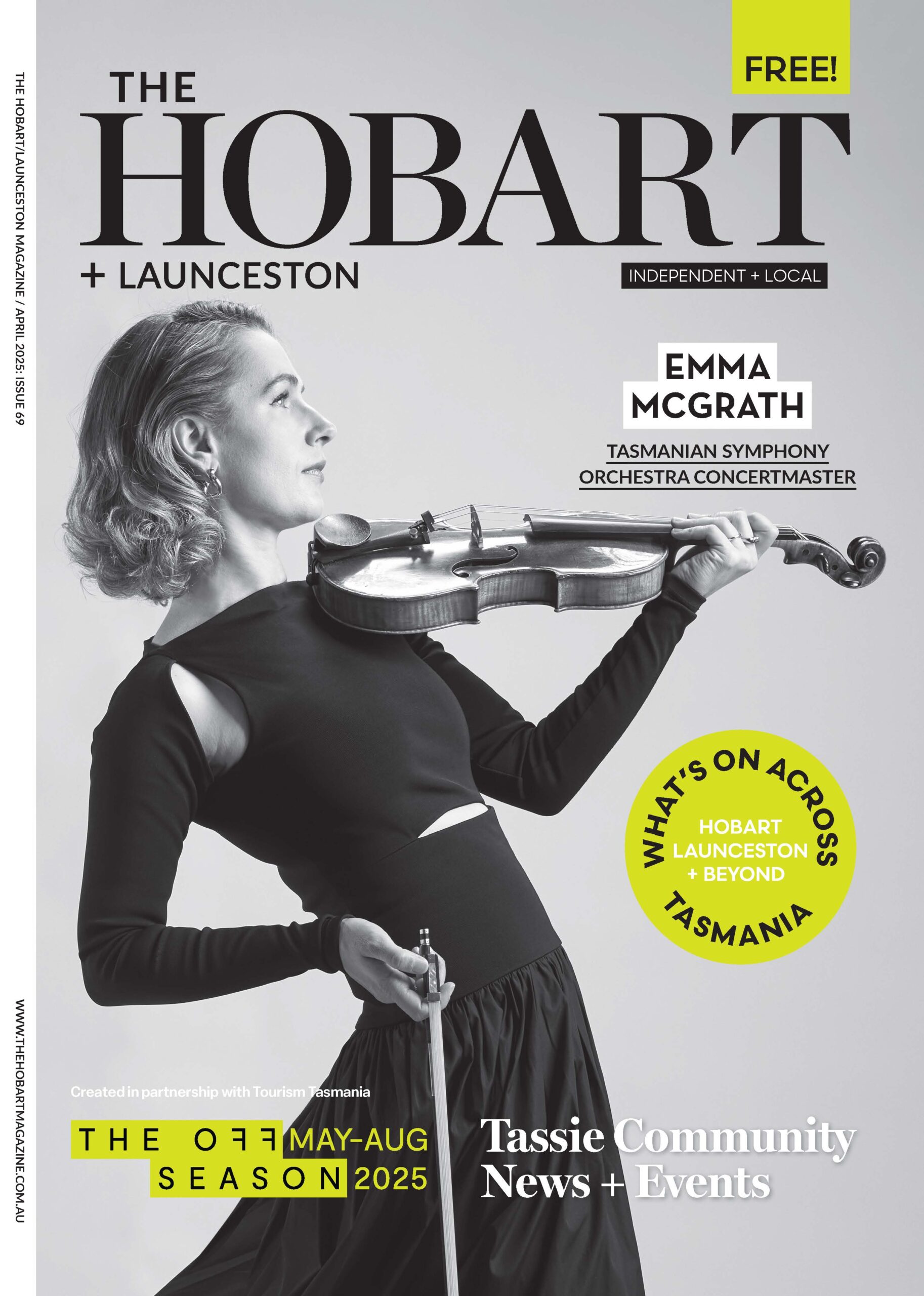The Power Of Collaboration
by Ollie Benson

It is no secret that farming is tough. It’s physical and often isolating work. The lack of affordable land and tight margins mean making a living from farming is hard. Throw in the weather and it’s fair to say that the odds are stacked against the farmer.
The industrial food system is designed to reward large-scale processed food producers, as opposed to farmers. And if you are a smaller scale farm, one that supplies food directly to communities, that adapts to pandemics and supply chain disruptions, and that prioritises regenerative practices, you are perversely less supported and less likely to be financially viable. It’s a complex scenario, but farmers are resilient people. And in the Huon Valley two farms are showing how collaboration can help farmers thrive.
Keeley Bytheway runs a market garden on Fat Pig Farm near Cygnet, while Ines Dos Santos and David Simmons run Sparrow Foot Farm in Franklin. Both farms have been individually growing vegetables and supplying them to customers via weekly veg box subscriptions, but through a mutual passion for community support, they have now come together to form the Sparrow Foot Collective.
Keeley, Ines, and David have combined their customer base, so that each of their own customers are now supplied vegetables from both farms. This has meant they can increase the number of veg boxes they produce, and they have also started selling through the online farmers market, the Tasmanian Produce Collective.
Fittingly, throughout June, one item that will feature in the veg boxes of Sparrow Foot Collective has its own story of collaboration. Broccolo fiolaro is a traditional Italian brassica that has been cultivated for many centuries in Italy but has been at risk of disappearing. It is currently on the Slow Food Ark of Taste list which is a living catalogue of foods facing extinction. Through the Gusto Italiano Project, a collaboration between the US based Culinary Breeding Network, a US organic seed farm, and an Italian seed producer, fiolaro seed is now commercially available in Australia.
Unlike the varieties of broccoli more commonly grown in Australia, fiolaro does not grow a large central head but instead produces side shoots – “fiois” – from its stem which are harvested and cooked with the leaves. It is rich in vitamins, mineral salts and calcium and becomes even more flavourful after frosts, when, to defend itself against the cold, the plant limits the amount of water held in its tissues, concentrating salts and sugars. Collaboration is key to resilience, and the Sparrow Foot Collective will be sharing this message at this year’s Cross Pollinate, Sprout Tasmania’s annual event for small-scale producers, and those interested in the food and farming system.
So, if you’re keen on understanding how the power of collaboration can provide support, adaptability, more efficient processes, and increased chances of success, as it has for Keeley, Ines, David and the mighty fiolaro, you won’t want to miss it.
Cross Pollinate is held in Launceston on 16 June and in Hobart on 23 June. Tickets are on sale now, for all details and to secure a spot head to www.sprout.org.au.
CREPES WITH RICOTTA AND FIOLARO BROCCOLI
Makes 10 crepes
Ingredients
For the stuffing:
1kg Fiolaro broccoli
2 cloves of garlic and 2 spring onions, sliced
400g ricotta cheese
Grated zest of half a lemon
30g of grated parmesan
Olive oil, nutmeg, salt, freshly ground black pepper
For the crepes:
3 eggs
150g plain flour
400ml milk
A big pinch of salt
For the bechamel:
500ml milk
50g plain flour
50g butter
200g tomato passata
Boil the fiolaro until they’re tender (it will take at least half an hour), then drain and cut it into small pieces. Fry quickly in a pan with oil, salt, pepper, garlic and spring onion, then let it cool completely. To prepare the crepes whisk the eggs with the flour, add a pinch of salt and slowly add the milk. Leave to rest for half an hour at room temperature then heat a pan and lightly grease it with oil. Pour a ladle of batter, spread it by twirling the pan a little and cook on both sides. Stack them on a plate, using baking paper to separate. To prepare the filling mix the ricotta, lemon zest, parmesan, a sprinkling of nutmeg, salt and pepper and the cooled broccoli. Stuff each crepe by spreading a little filling on half, fold over the empty flap, then fold again in half. Place all the stuffed crepes on a baking dish to rest. Make the bechamel by melting the butter over a medium heat. Add the flour and stir for 1 minute, then add half the milk. Whisk until smooth, then add the rest of the milk and keep whisking until thickened. Pour the bechamel on the crepes, then add the passata on top of the bechamel. Sprinkle with a little more parmesan, then bake in a moderate oven for 20 minutes.

